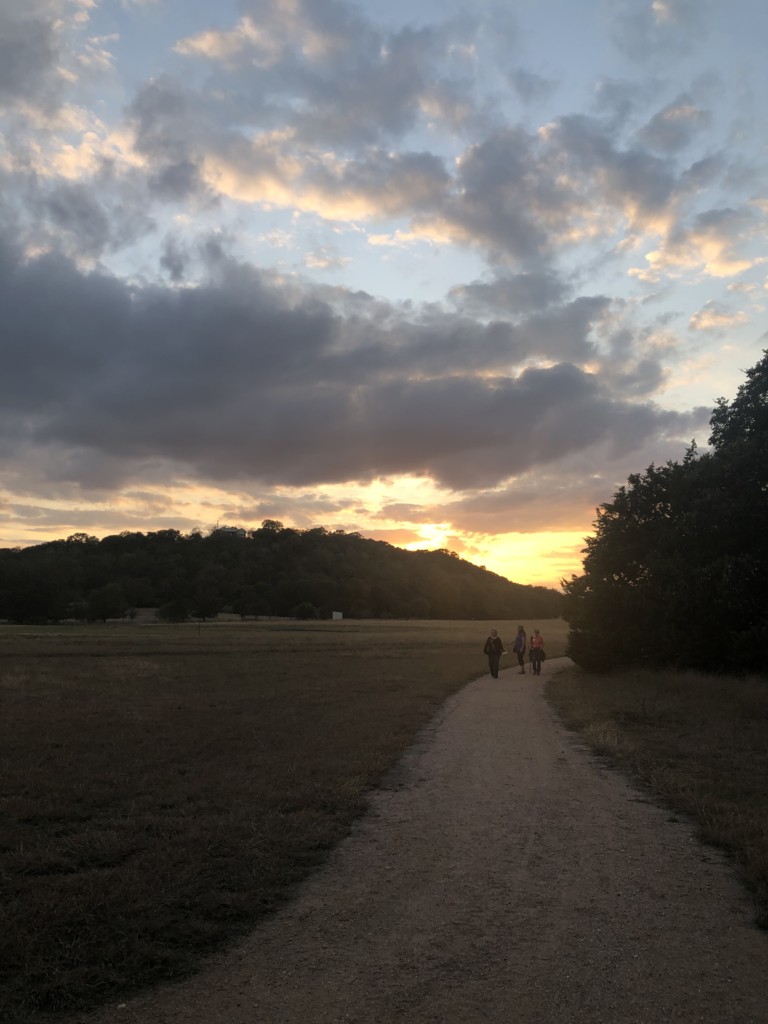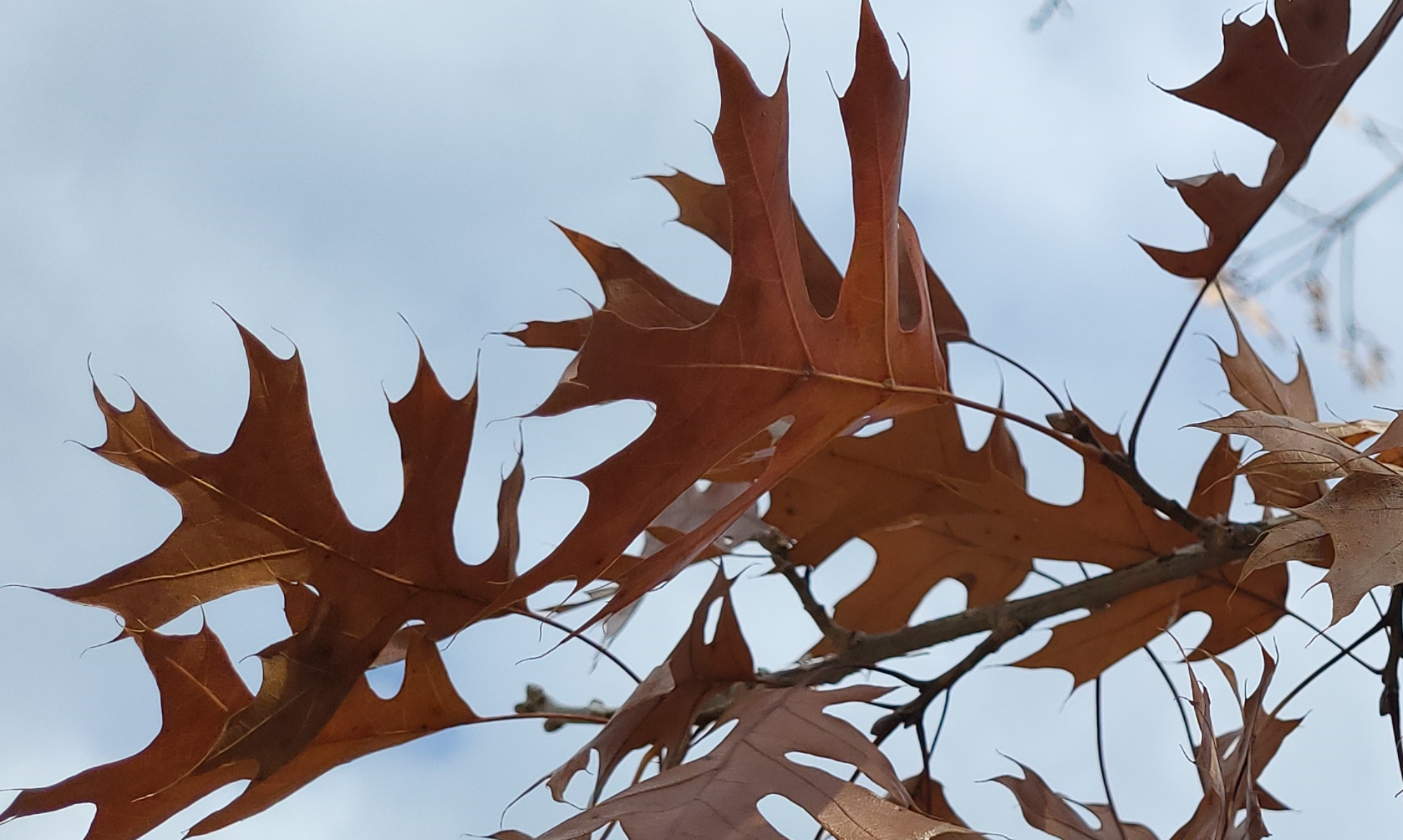** ARCHIVED POST – LINKS AND IMAGES MAY NOT WORK**
— by Vicky Husband

Eight field trip attendees enjoyed a mild and peaceful evening walk through an eastern off-trail portion of grazing land ringed with Cedar elms, Spanish Oaks and native Pecans. We began by crossing a culvert with spent Maximilian sunflowers (Helianthus maximiliani), Broomweed (Amphiachyris amoena), and the seed burs of Rough cockleburr (Xanthium strumarium), affectionately known as Porcupine eggs. An open field of predominately KR Bluestem (Bothriochloa ischaemum) revealed hints of fall blooming Heath aster (Symphyotrichum ericoides) with stems that turn maroon in winter. This field sports a couple of specimen Huisache trees (Acacia farnesiana), with one exceeding fifteen feet in height. After the field, we cut though the Ashe juniper to the exposed river bank below. The setting sun enticed us to use the trail up from the river bench, where we observed some isolated but interesting specimens of narrow-leaved Sneezeweed (Helenium amarum), White tridens (Tridens albescens), Silver bluestem (Bothriochloa saccharoides) and Little bluestem (Schizachyrium scoparium). Hoping to add a new species, two went back to investigate a prostrate and hoary vervain-type specimen along the trail. Join us in December and January on a free Tuesday for the final two months of our plant surveys of Garey Park in Georgetown, Texas.
** ARCHIVED POST – LINKS AND IMAGES MAY NOT WORK**
